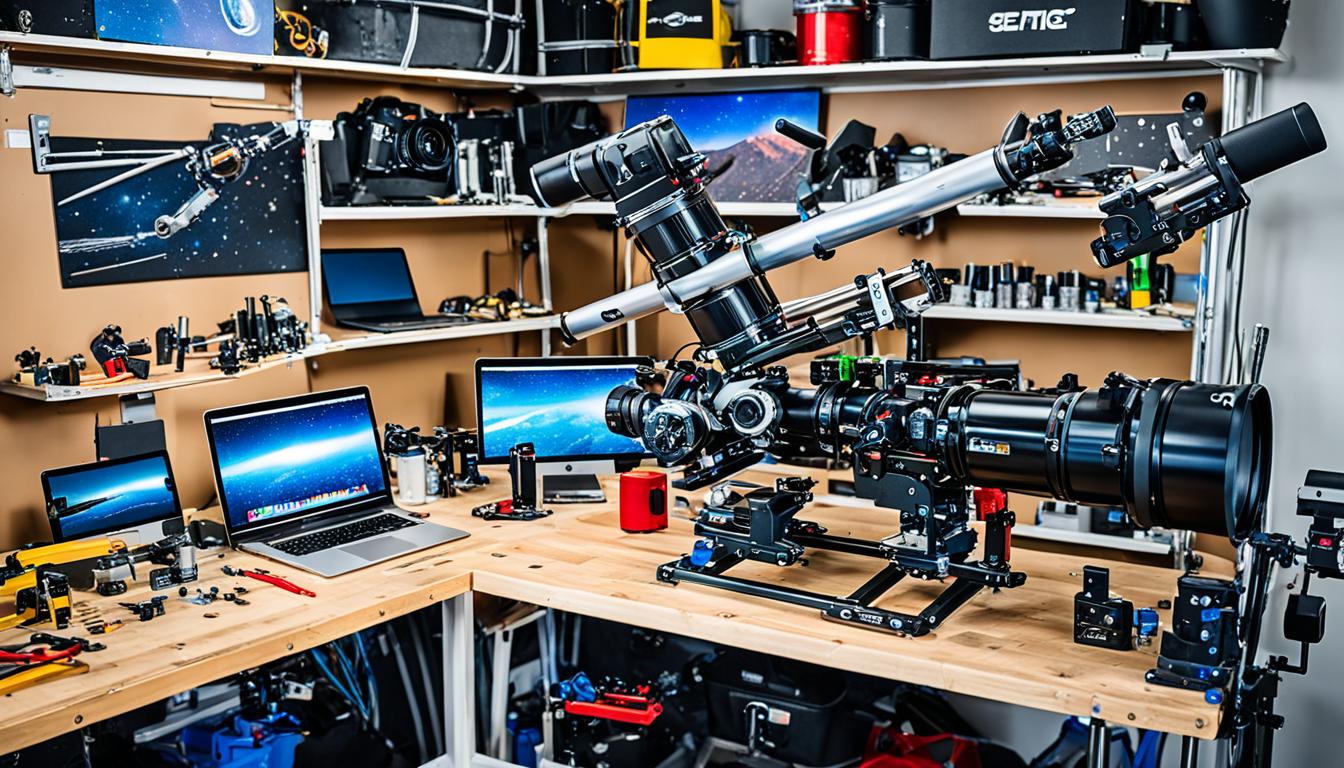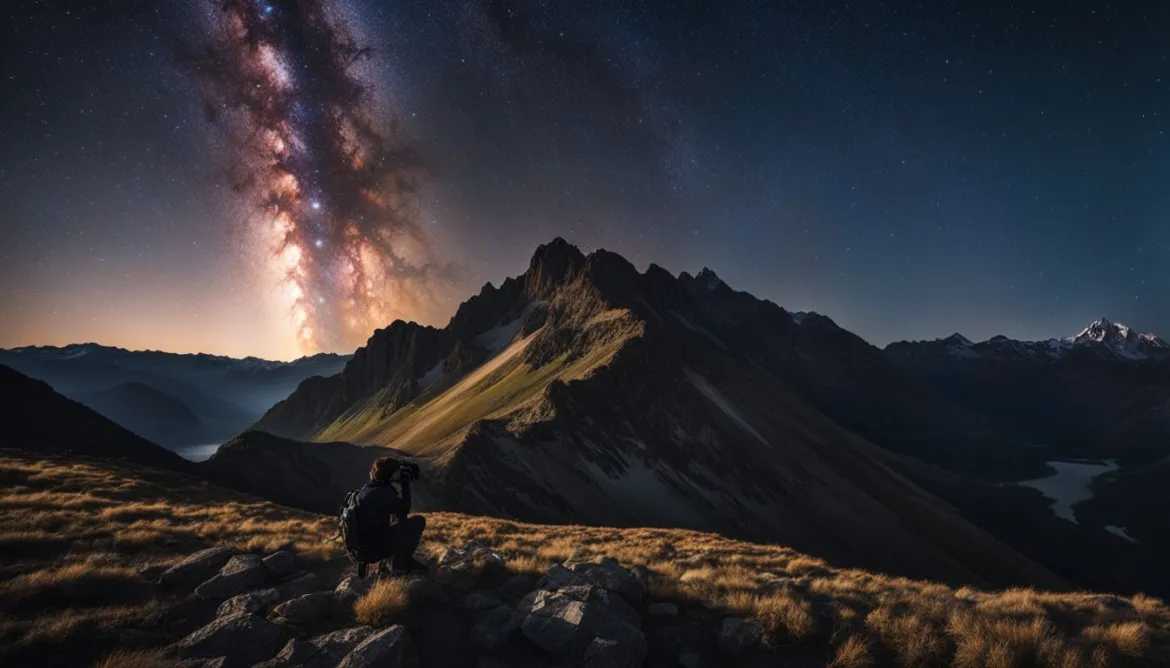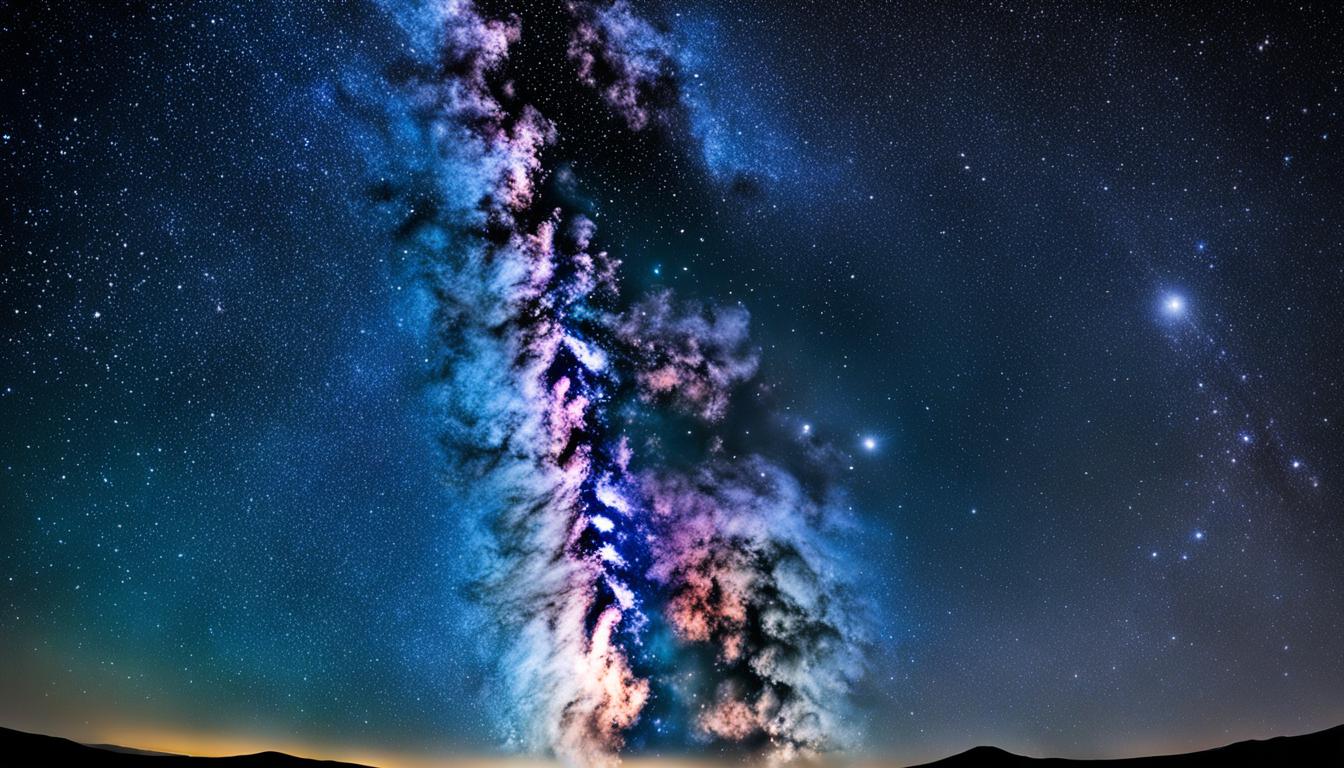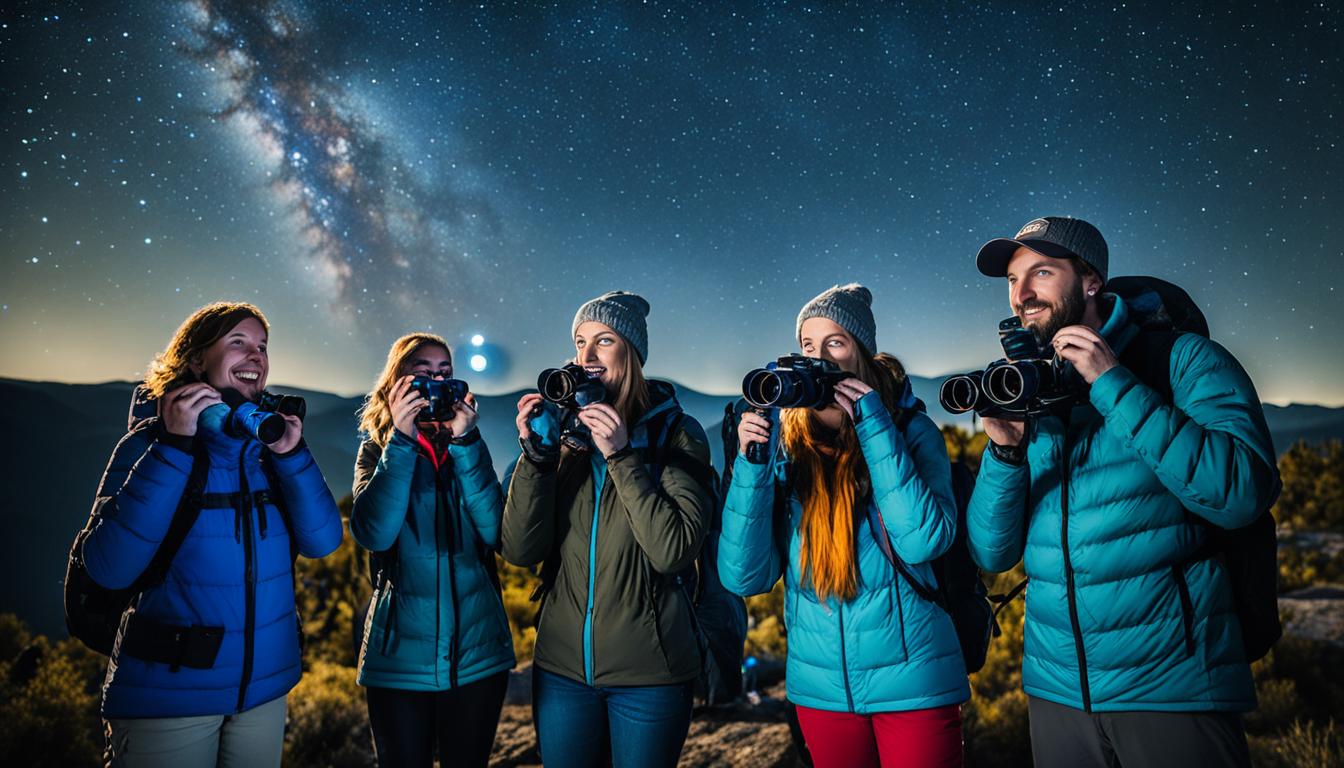Building an astrophotography rig can be an exciting and rewarding journey for night sky enthusiasts like us. With a step-by-step approach, you can create your own astrophotography rig and capture stunning images of the cosmos. Whether you’re a beginner or have some experience in this field, this guide will help you understand the essential components and equip you with the knowledge to embark on your astrophotography adventure.
Starting with a budget-friendly setup that revolves around an entry-level DSLR camera and telescope is a popular option for many aspiring astrophotographers. This beginner-friendly setup can yield impressive results, allowing you to capture deep-sky objects in our night sky. However, it’s essential to keep in mind that progress in astrophotography takes time and patience. Set personal goals, and work towards them steadily, enjoying the process as you go.
Key Takeaways:
- Building an astrophotography rig is an exciting and rewarding journey.
- Start with a budget-friendly setup centered around an entry-level DSLR camera and telescope.
- Set personal goals and work towards them steadily, as progress in astrophotography takes time and patience.
- Enjoy the process and embrace the wonder of capturing the beauty of the cosmos.
- Stay curious and continue learning and growing in your astrophotography skills.
Components of a Beginner Astrophotography Kit
When venturing into the fascinating world of astrophotography, having the right equipment is essential. A well-equipped beginner astrophotography kit consists of the following components:
1. DSLR Camera
A beginner-level DSLR camera is a versatile and indispensable tool for capturing stunning astrophotography images. Brands like Canon, Nikon, and Sony offer excellent options with various features to suit different budget ranges. With their large image sensors and interchangeable lenses, DSLR cameras provide the flexibility needed to capture celestial objects with clarity and detail.
2. Telescope
A telescope is the heart of any astrophotography kit. For beginners, a compact refractor telescope is recommended due to its portability and ease of use. Look for telescopes with features like a wide field of view and sharp optics for capturing the wonders of the night sky. Celestron and Orion are reputable brands known for their beginner-friendly telescopes.
3. Tripod
A sturdy tripod is essential for providing stability and minimizing image blur during long-exposure astrophotography. Make sure to choose a tripod that is compatible with your DSLR camera and can handle the weight of your equipment. Brands like Manfrotto and Vanguard offer reliable tripods suitable for astrophotography.
4. Intervalometer or Laptop
An intervalometer or a laptop is useful for controlling the exposure settings of your DSLR camera during astrophotography sessions. This enables you to capture long-exposure images without the need to physically operate the camera. Most DSLR cameras have built-in intervalometer functions, while external intervalometers provide additional control options.
5. Star Tracker
For capturing long-exposure images of the night sky without star trails, consider using a star tracker. A star tracker compensates for the Earth’s rotation, allowing you to achieve longer exposures without motion blur. Brands like Sky-Watcher and iOptron offer reliable and portable star tracking mounts for astrophotography enthusiasts.
“A beginner astrophotography kit usually consists of a DSLR camera, telescope, tripod, intervalometer or laptop, and optionally a star tracker for long-exposure images without star trails.”
| Component | Brands |
|---|---|
| DSLRS Camera | Canon, Nikon, Sony |
| Telescope | Celestron, Orion |
| Tripod | Manfrotto, Vanguard |
| Intervalometer or Laptop | Various |
| Star Tracker | Sky-Watcher, iOptron |
Choosing the Right Equipment for Astrophotography
When it comes to astrophotography, having the right equipment is crucial for capturing stunning images of the night sky. Whether you’re a beginner or an experienced enthusiast, investing in high-quality gear can significantly enhance your astrophotography experience. Let’s explore the key equipment you’ll need to get started on your astrophotography journey.
Motorized Mounts for Accurate Tracking
One of the essential pieces of equipment for astrophotography is a motorized mount. A motorized mount, such as a German Equatorial or Strain Wave Gear mount, provides precise movement and tracking of celestial objects. This is crucial for capturing long-exposure images without any blurring or trailing effects. By allowing you to align your camera or telescope with the rotation of the night sky, a motorized mount ensures that your images are sharp and detailed.
Refractor Telescopes for Beginners
If you’re just starting out in astrophotography, a refractor telescope is an excellent choice. These telescopes offer exceptional optical quality and a wide field of view, making them perfect for capturing stunning images of the night sky. For beginners, a smaller refractor telescope is recommended as it is more portable and easier to handle. Additionally, a wide field of view allows you to capture larger portions of the night sky, making it easier to locate and frame your desired targets.
DSLr Camera for Versatile Imaging
When it comes to astrophotography, DSLR cameras are highly versatile and capable of producing high-quality images. Their interchangeable lenses and manual control settings give you the flexibility to experiment with different focal lengths and exposure settings. This allows you to capture a wide range of celestial objects, from expansive wide-field shots to close-up images of distant galaxies and nebulae. DSLR cameras are also widely supported in astrophotography communities, making it easier to find tutorials, resources, and software specific to these cameras.
Intervalometers and Auto-Guiding Solutions for Enhanced Control
To have precise control over exposure settings and image capturing, intervalometers and auto-guiding solutions are invaluable tools. An intervalometer allows you to automate your camera’s exposure settings, enabling you to capture long exposure images without the need for continuous manual adjustments. Auto-guiding solutions, on the other hand, enhance the tracking accuracy of your motorized mount. They detect and correct any subtle tracking errors, resulting in sharp and focused images. These tools are especially helpful when capturing detailed images of distant objects and for longer exposure times.
Image Name: Astrophotography Equipment

Having the right equipment is key to achieving stunning results in astrophotography. Image source: Unsplash
Getting Started with Astrophotography
Are you ready to dive into the breathtaking world of astrophotography? With just a DSLR camera, tripod, and a little bit of knowledge, you can embark on a captivating journey of capturing the wonders of the night sky. Whether you’re interested in wide-field astrophotography or close-up views of celestial objects, there’s something magical waiting to be discovered.
Wide-Field Astrophotography:
To capture the vastness of the night sky, wide-field astrophotography is the perfect starting point. This technique involves using a camera lens with a wide-angle to capture stunning panoramas of the stars, the Milky Way, and even auroras if you’re lucky enough to witness them. It’s an immersive experience that allows you to capture the beauty of the entire celestial canvas.
Close-Up Astrophotography:
If you’re fascinated by the intricate details of celestial objects, close-up astrophotography is your gateway to exploring galaxies, nebulae, and planets in stunning detail. By attaching your DSLR camera to a telescope, you can zoom in on specific objects and reveal their awe-inspiring features. Get ready to witness the hidden gems scattered throughout the universe.
Processing Astrophotography Data:
Once you’ve captured your astrophotography images, the journey is not complete. Processing the data is an essential step to bring out the subtle details and enhance the final result. By using software tools such as Adobe Photoshop or DeepSkyStacker, you can refine your images, adjust the colors, reduce noise, and create stunning cosmic portraits that truly reflect the wonders of the night sky.
Escaping Light Pollution:
While getting started with astrophotography, it’s crucial to understand the impact of light pollution on your images. Light pollution can significantly diminish the quality of your astrophotography, making it harder to capture clear and vibrant photos. Finding dark-sky locations away from city lights can make a world of difference in the quality of your images.
Remember, starting your astrophotography journey doesn’t mean you need to invest in top-of-the-line equipment right away. Begin with the DSLR camera you already have and a sturdy tripod. As you gain more experience and refine your skills, you can gradually upgrade your equipment and delve deeper into the mesmerizing world of astrophotography.
Conclusion
Embarking on an astrophotography journey is a thrilling and captivating experience that allows us to explore the wonders of the universe. As we delve deeper into this hobby, we may find ourselves yearning for equipment upgrades to enhance our astrophotography capabilities. Upgrading our DSLR camera or telescope can unlock new possibilities and enable us to capture more intricate details of celestial objects.
However, it’s important to remember that astrophotography is not solely defined by the gear we use. It is also a reflection of our passion, patience, and artistic vision. By mastering different astrophotography techniques, we can transcend the limitations of our equipment and create breathtaking images.
As we continue our astrophotography journey, let’s relish every moment of discovery and marvel at the beauty of the cosmos. Let’s embrace the learning process and strive to improve our skills, both in capturing celestial wonders and in post-processing our astrophotography data. Together, let us unveil the splendor of the night sky and share our love for astrophotography with others.
FAQ
What does a beginner astrophotography kit include?
A beginner astrophotography kit typically includes a DSLR camera, telescope, and tripod.
What type of telescope is recommended for beginners?
A refractor telescope, particularly a small one with a wide field of view, is recommended for beginners.
Can I start astrophotography with just a DSLR camera?
Yes, you can start astrophotography with just a DSLR camera, tripod, and basic knowledge.
What is wide-field astrophotography?
Wide-field astrophotography involves capturing the night sky using a camera lens to encompass a large area of the sky.
What is close-up astrophotography?
Close-up astrophotography involves using a telescope to focus on specific objects in the night sky.
How Can I Enhance My Astrophotography Rig with Post-Processing Techniques?
Enhance your astrophotography rig with advanced astrophotography postprocessing techniques to bring out the best in your images. By using software like Adobe Photoshop and Lightroom, you can improve the clarity, contrast, and color balance of your photos, resulting in stunning, professional-looking astrophotography shots.




